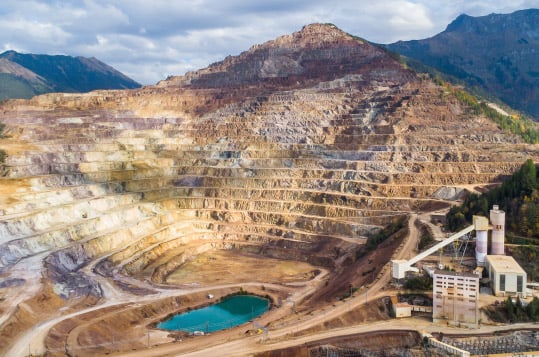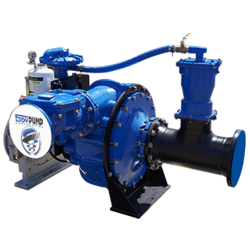Quarrying Applications of EDDY Pump



Applications of Our Slurry Pumps in Quarrying

- Dewatering: Heavy-duty slurry pumps remove water from quarries to maintain a dry working environment, facilitate efficient material extraction, and prevent flooding.
- Material Transport: These submersible slurry pumps help transport mined materials, such as sand, gravel, and crushed stone, from the quarry site to processing or storage areas. The abrasive nature of these materials requires pumps that can handle their high solids content.
- Tailings Management: In specific quarrying processes, waste materials or tailings are generated. Submersible pumps transport these tailings to settling ponds or storage areas, helping manage waste disposal effectively.
- Washing and Screening: Quarrying often involves washing and screening processes to separate materials of different sizes. These submersible pumps can transport water and the resulting slurry mixture through these processes.
- Abrasive Slurry Handling: Heavy-duty slurry pumps handle abrasive slurries created during material extraction. The pumps’ robust design and wear-resistant materials prevent damage and extend their operational life.
- Pond and Lagoon Management: Quarries may have ponds or lagoons for water storage, sediment settling, or recycling. Our submersible slurry pumps are employed to circulate and manage the contents of these containment areas.
- Hydraulic Transport: Some quarrying processes involve hydraulic transport, where slurries are pumped to different locations for processing or storage. Submersible pumps are essential for maintaining efficient hydraulic conveyance.
- Concrete and Cement Production: Some quarries produce materials used in concrete and cement production. Submersible pumps can assist in transporting cement slurries, ensuring the efficient mixing and production of construction materials.
CALL FOR SALES OR SUPPORT
If you need help with Pump Selection, Sales or Engineering Support
Call 619-345-5446

Application of EDDY Pump’s Hydraulic Dredging in Quarrying

- Underwater Material Extraction: Submersible hydraulic dredge extracts materials such as sand, gravel, and other aggregates from underwater deposits in quarries, lakes, or rivers. It allows for the efficient removal of otherwise inaccessible materials in traditional methods.
- Dredge Pond Maintenance: Quarries often have dredge ponds or lagoons where sediment and water accumulate. Submersible hydraulic dredge is employed to remove accumulated sediment, maintain proper water depth, and optimize the capacity of these ponds for sediment settling and water recycling.
- Deepening and Expansion: Hydraulic dredging can deepen quarry pits or expand the operational area. This is particularly useful when the quarry’s active mining area needs to be extended below the water table.
- Sediment Removal: Sediment buildup can hinder quarry operations, reducing water storage capacity and affecting material extraction processes. Slurry pump dredge effectively removes accumulated sediment, maintaining the efficiency of various methods.
- Environmental Restoration: Quarries that have completed their active extraction phase may use hydraulic dredging equipment to restore aquatic habitats or natural water bodies, ensuring proper sediment removal and rejuvenation.
- Tailings Pond Management: Quarries may have tailings ponds where waste materials and sediments settle. Slurry pump dredge can manage and maintain these ponds, preventing overflows and ensuring proper waste disposal.
- Water Recirculation: Dredging aids in recirculating water within quarry operations. It helps maintain water quality and supports sustainable water reuse practices by removing sediments and contaminants.
- Infrastructure Maintenance: Hydraulic dredging equipment can also maintain waterways, channels, and berths within the quarry area, ensuring vessels and equipment can navigate efficiently.




